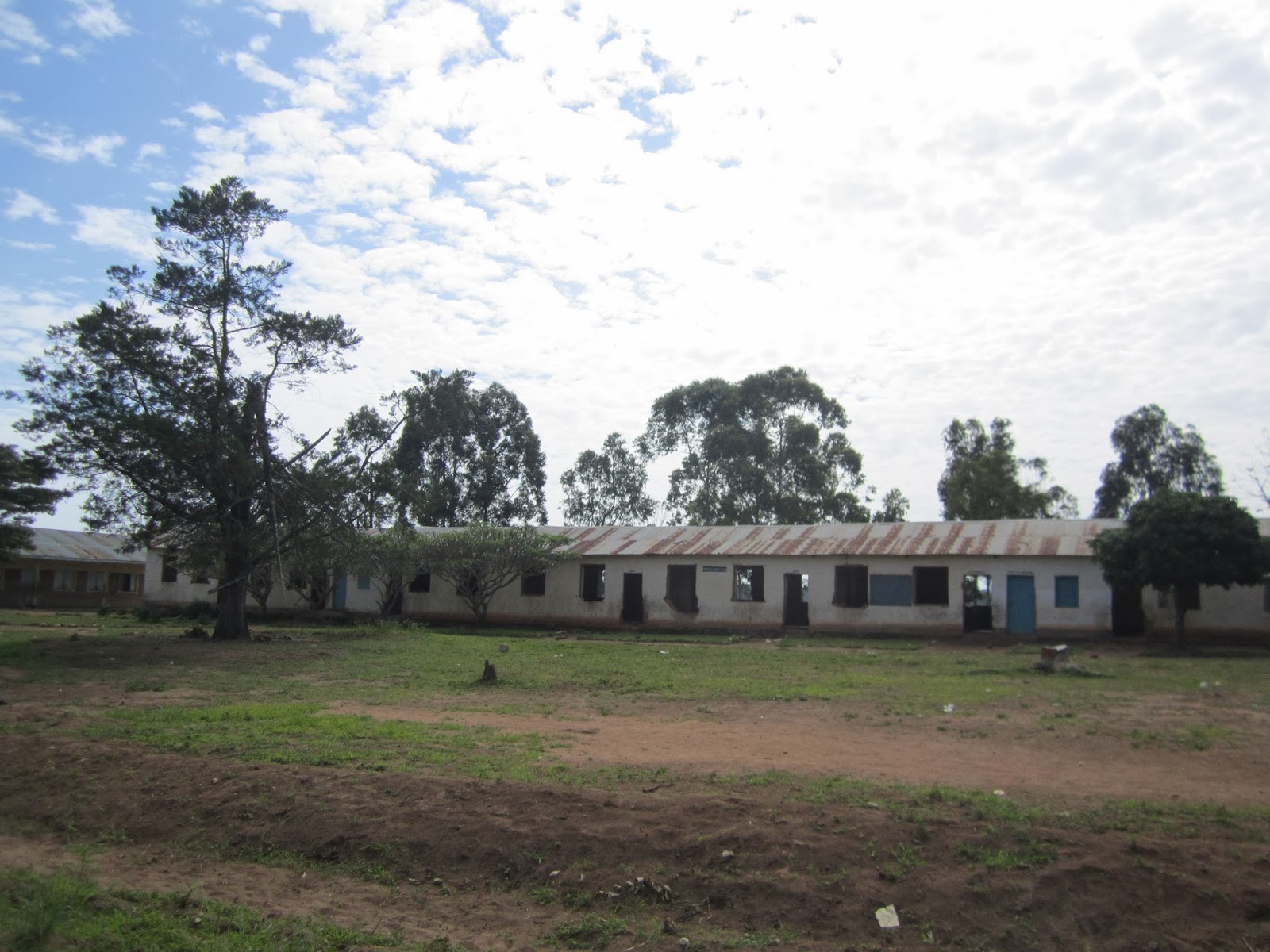Mambo!
This week I wanted to start thinking about what it might be like to live and go to school in an impoverished area. An impoverished area is somewhere that lacks money and infrastructure (like roads, electricity, government services), meaning that day-to-day life is different than what we might consider 'poor' in the United States.
On this blog so far, we've touched a few of the other difficulties some Tanzanians face.
I've shared pictures of how people might cook over charcoal or woodfire, and that they have to walk long distances for water, carrying the water on their heads.
I've also shared that hospitals are far away, and some houses may not even be made out of concrete or have a metal roof.
In short, life outside of the classroom isn't easy. Most students have to study in the evenings with dim lighting. Many do not have alarm clocks, but will be beaten if they are late for school. Others are only able to eat one meal a day.
 |
| My student Boniphace only has one school uniform, which he keeps in pristine condition by hanging them up in his small room. |
 |
| Here's the principal sitting in his office at a primary school I visited. |
 |
| A primary school in NW Tanzania |
 |
| The kitchen for the primary school, where they make porridge for the students. |
 |
| This is Muyenzi Primary School. Notice none of the rooms have windows, and only a few of the classrooms have doors. |
 |
| Another photo of Muyenzi Primary School. Only a handful of these students pass their exams in seventh grade and are able to attend Secondary School (which is not free). |
When you get to secondary school, another set of problems arise.
The first is that you have to pay to go to school every year, or as they say "school fees". They might be what we consider cheap, about $50 for a year, but where these students are from, that might be 10%-50% of what their entire family makes a year.
 |
| One of my classes posing with me (can you see me?!) my first semester. |
The second major issue is that teachers do not always go to all of their classes and teach their students. One of the reasons I think my students did so well in English class was that I was always there to teach them!
The other hardship is that there is no technology in the classroom, and students do not have their own textbooks. This means that the only information students get is what the teacher writes, by hand with chalk, on the chalkboard in the front of the classroom.
In one class, I would fill the board at least twice, because I was careful to write large enough so students in the back of the classroom could read what I was writing!
Yet, in the face of difficulty, in the face of long days, grumbling stomachs, and hard chores, these students have big dreams.
They go to school each and every day with a smile on their face, many times walking hours a day to and from school, because they know that education is the key that could unlock a brighter future.
These students know that if they study hard and get high enough scores, they might have the chance to go to college and get a job that will allow them to live a better life, and help their families to have a better life too.
They are all truly, truly inspiring -- and an amazing reminder for us to be grateful for everything that we have...but also to also dream for everything we can be!
Next week is my last post! I'll be talking about the value of $1, as well as sharing with you a fundraiser that I am working on that helps keep students like the ones I talked about today in school. Hopefully, I will also be able to post a short video introducing myself before my arrival!
Baadaye,
Marisa
-----------------------------
Teachers & Faculty: Below is a link to a story of a specific student, Bahati. Bahati is a true inspiration to me, and depending on the ages of your students, you might want to read this story to them and engage them in a meaningful conversation about education.
"A Boy Named Luck: Bahati"




Dakota from Mrs. Dann's 6th grade class wants to know: How old do people have to be to work in Tanzania?
ReplyDeleteMambo, Marisa.
ReplyDeleteWe thought that students who could afford high school were able to go to high school. But after reading Bahati's story, we know that students must also pass the Standard 7 exam. Is that right?
Casey Park
Here at Owasco Elementary, we have been catching up with your earlier posts. Students from Mrs. Brown's class were particularly interested in your climb on Mt. Kilamanjaro. We were wondering how you prevented yourself from getting too cold and tired, and how many miles you climbed. Another student asked if there are any zoos in Tanzania?
ReplyDeleteThanks for sharing useful information for us.I really enjoyed reading your blog, you have lots of great content.Please visit here: hotel accra online
ReplyDelete